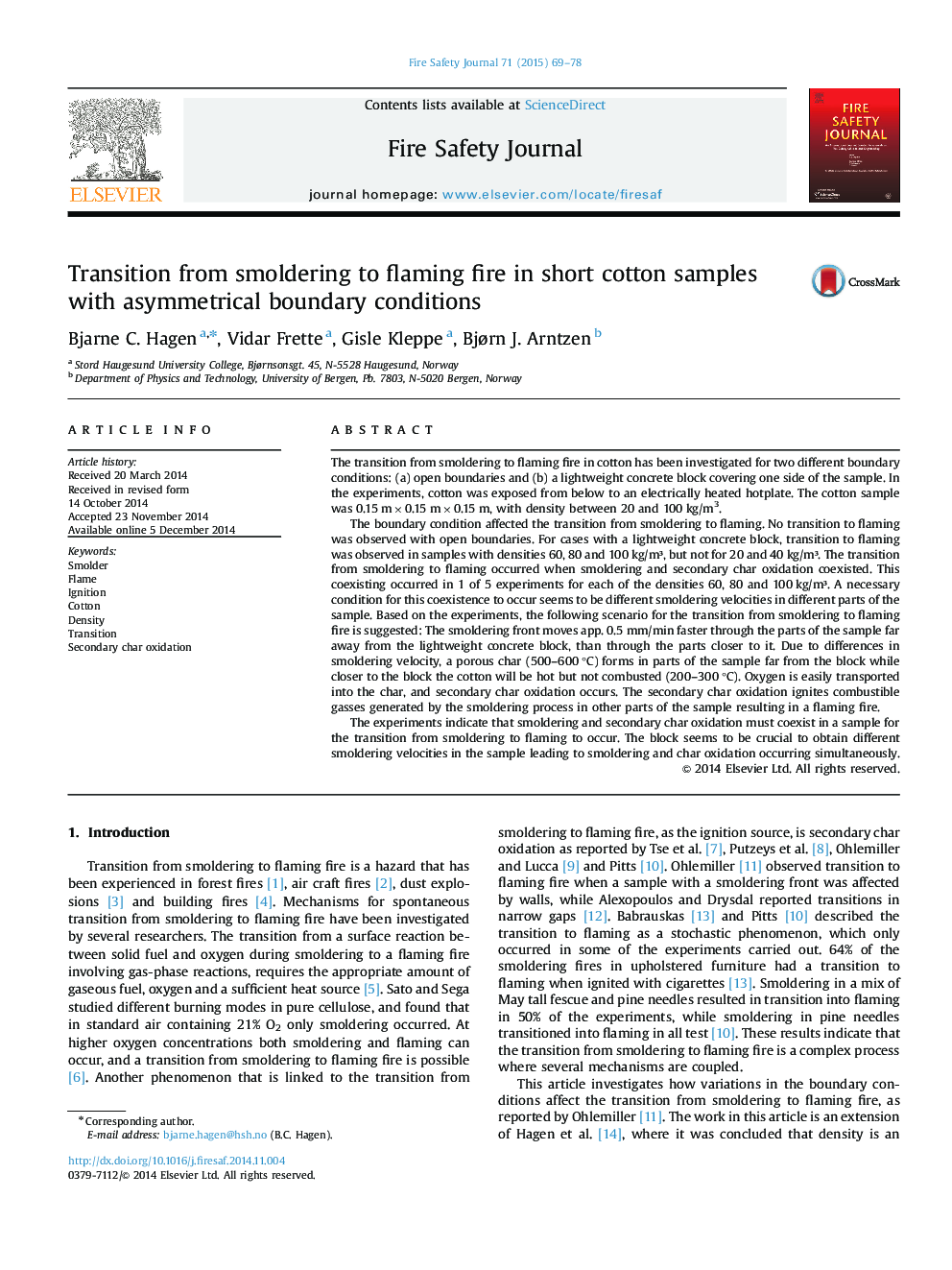| کد مقاله | کد نشریه | سال انتشار | مقاله انگلیسی | نسخه تمام متن |
|---|---|---|---|---|
| 269784 | 504702 | 2015 | 10 صفحه PDF | دانلود رایگان |
• Two boundary conditions: (a) open boundaries and (b) a lightweight concrete block.
• The boundary condition affected the transition from smoldering to flaming.
• Transition to flaming was observed with a lightweight concrete block.
• Transition was observed for densities 60, 80 and 100 kg/m³, but not for 20 and 40 kg/m³.
• The transition flaming occurred when smoldering and secondary char oxidation coexisted.
The transition from smoldering to flaming fire in cotton has been investigated for two different boundary conditions: (a) open boundaries and (b) a lightweight concrete block covering one side of the sample. In the experiments, cotton was exposed from below to an electrically heated hotplate. The cotton sample was 0.15 m×0.15 m×0.15 m, with density between 20 and 100 kg/m3.The boundary condition affected the transition from smoldering to flaming. No transition to flaming was observed with open boundaries. For cases with a lightweight concrete block, transition to flaming was observed in samples with densities 60, 80 and 100 kg/m³, but not for 20 and 40 kg/m³. The transition from smoldering to flaming occurred when smoldering and secondary char oxidation coexisted. This coexisting occurred in 1 of 5 experiments for each of the densities 60, 80 and 100 kg/m³. A necessary condition for this coexistence to occur seems to be different smoldering velocities in different parts of the sample. Based on the experiments, the following scenario for the transition from smoldering to flaming fire is suggested: The smoldering front moves app. 0.5 mm/min faster through the parts of the sample far away from the lightweight concrete block, than through the parts closer to it. Due to differences in smoldering velocity, a porous char (500–600 °C) forms in parts of the sample far from the block while closer to the block the cotton will be hot but not combusted (200–300 °C). Oxygen is easily transported into the char, and secondary char oxidation occurs. The secondary char oxidation ignites combustible gasses generated by the smoldering process in other parts of the sample resulting in a flaming fire.The experiments indicate that smoldering and secondary char oxidation must coexist in a sample for the transition from smoldering to flaming to occur. The block seems to be crucial to obtain different smoldering velocities in the sample leading to smoldering and char oxidation occurring simultaneously.
Journal: Fire Safety Journal - Volume 71, January 2015, Pages 69–78
